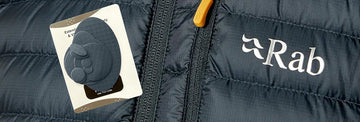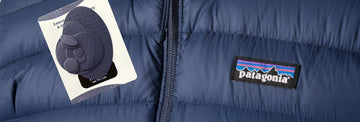How to Determine the Right Size and Height For Compression Socks
by azengear on May 08, 2022
One of the biggest challenges when it comes to determining the ideal size and height of the compression socks you’ll be needing is that there is no universal sizing standard.
1. Actual Sizes Differ By Country or Region
When looking at things in one country – as opposed to globally – sizing standards and specifications can vary significantly from one to the next. As such, the best advice is to go about manually measuring your legs, or asking someone else to do it on your behalf and then refer to the manufacturer's sizing chart to determine what size of their product suits you.
2. Measure Calf (and Ankle) Circumference
When choosing the size of knee high compression socks, you’ll need to take into account the circumference of your calf and ankle as well as know your shoe size.
3. Measure Distance Between Knees and Floor
In addition, taking measurements in terms of height involves accurately measuring the distance between your knees and the floor, or thighs and the floor for longer compression socks.
4. Use Manufacturer's Sizing Chart for Reference
The measurements you’ll need to know or provide will be determined by the products you need. Rather than simply relying on the usual small, medium, large etc. standards, it is important to focus on the actual measurements themselves and refer to the chosen product's sizing chart that is normally provided by the seller or manufacturer.
The sizing chart example below is provided by aZengear brand:
As you can see from this example, aZengear currently offer three sizes S/M, L/XL and XXL. Each size corresponds to a specific size range for shoe size and calf size circumference.
Product Spotlight:
Compression Socks for Men & Women (20-30 mmHg / Class 2)
- ERGONOMIC FIT & TRUE GRADUATED COMPRESSION - protect from cramps, reduce leg swelling & fatigue, improve blood circulation & muscle recovery
- ANTI-DVT FLIGHT SOCKS - keep your skin healthy, prevent from odours & allergies
- DOUBLE-STITCHED WITH SEAMLESS TOE - machine washable fabric (65% nylon, 20% elastane, 15% lycra); perfect for high intensity activities or long-term wear
- CUSHIONED & BREATHABLE CALF PRESSURE SUPPORT - prevent blisters & provide extra comfort at the toes, heel, sole of foot & achilles tendon
In terms of how high the compression garments you choose should extend up your leg, this is something that will be determined by your reasons for applying compression therapy in the first place. If you are recommended longer compression stockings and only wear short compression socks, you will not benefit from their intended effects – and vice-versa.
Generally speaking, knee-high compression socks are more comfortable and easier to wear than those that extend all the way up to the thigh. As such, it is generally recommended that anyone choosing compression garments purely for comfort purposes rather than medical reasons, knee-high examples are the best to start out with. From longer flights to standing for long periods and so on, give knee-high compression socks a try first.
By contrast, if you need compression garments for any important medical purposes, your doctor or consultant will advise you as to which height represents the most appropriate choice. In many instances, thigh-high compression stockings will be recommended following surgery as a means by which to reduce the risk of DVT, though there is in fact limited evidence to suggest that longer stockings are any more effective than shorter socks for this particular purpose.
Levels of Compression
After choosing the right size, you also need to ensure that you are getting the correct class of socks based on their compression level or "tightness". The graduated compression of socks is measured in mmHg (millimeters of mercury). The higher the number, the tighter the socks are. You can read in more detail about what compression levels to choose in our blog post here.
How to Put On Compression Socks
One important tip for those who may find it difficult to put compression socks on in the first place is to ensure that they are put on as soon as possible after waking up. The reason being that swelling and associated discomfort will usually be at its least severe level following an extensive period of laying down – particularly after sleeping. Talcum powder may also be used to help compression socks glide over the skin, though it is inadvisable to struggle with overly tight compression garments without first consulting with a medical professional.







